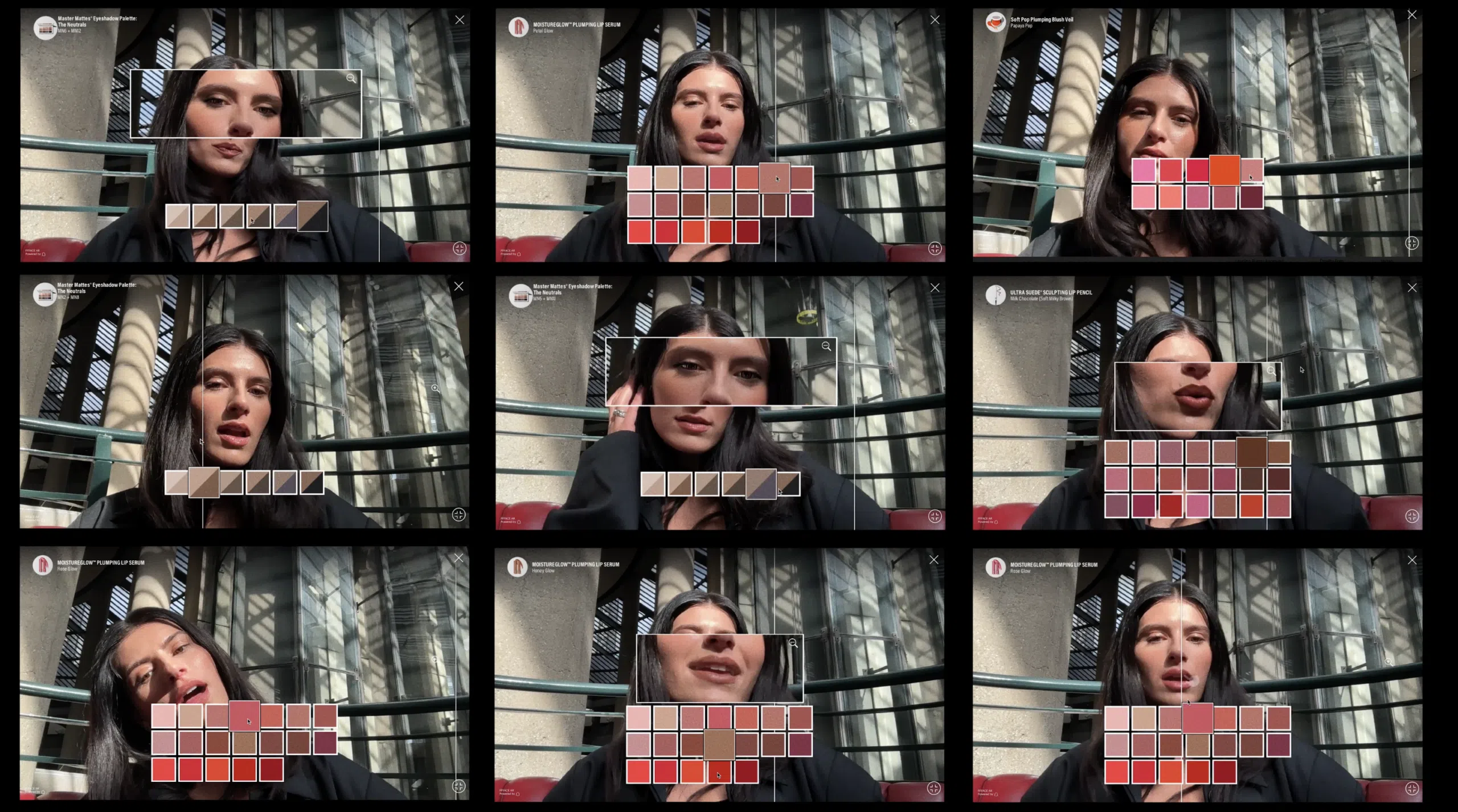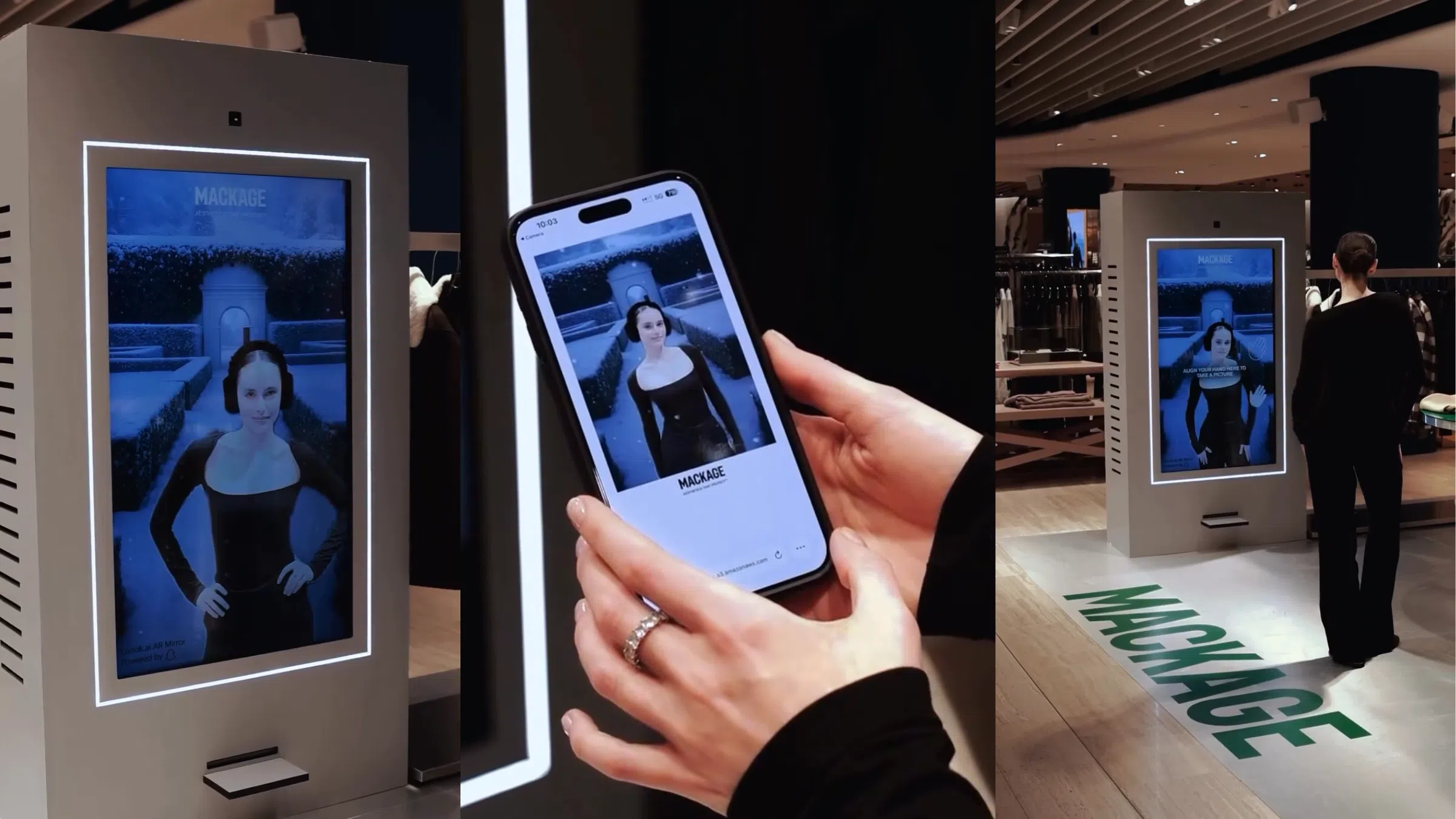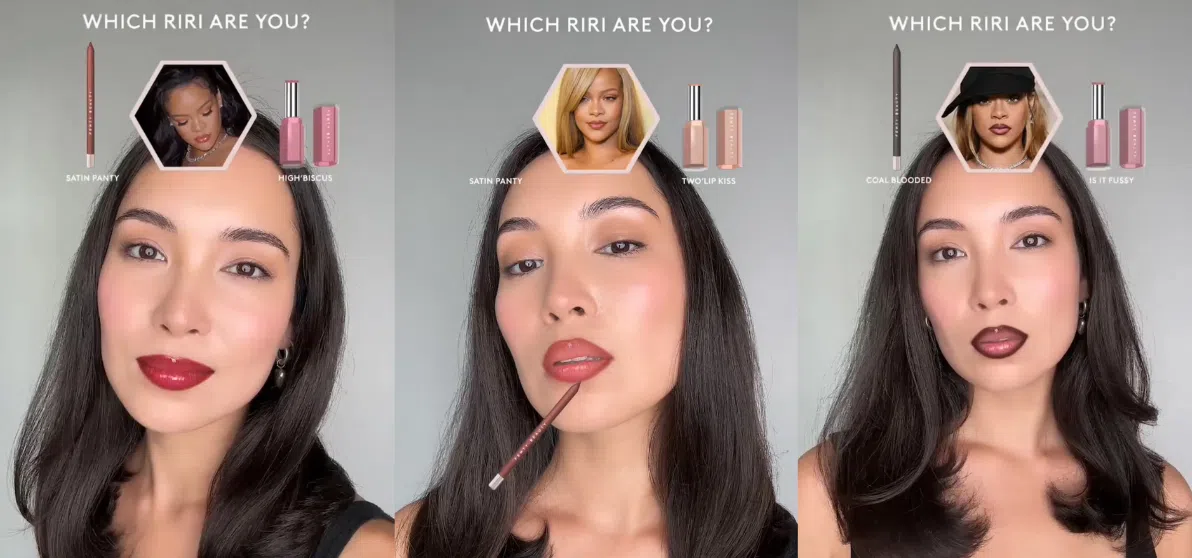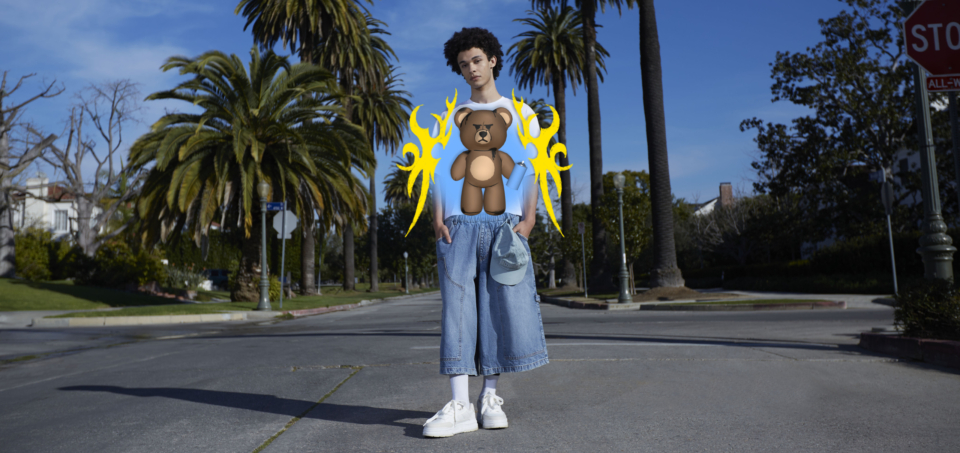Virtual Try-On: Revolutionizing the Retail Experience Through Augmented Reality

TL;DR: Virtual Try-On
Virtual Try-On technology is revolutionizing retail by allowing shoppers to preview products—like clothes, accessories, and makeup—in real time through AR, computer vision, and AI. It bridges the gap between online and in-store experiences, improving confidence and reducing returns. Used across industries from fashion and beauty to automotive and interior design, it enhances personalization and sustainability while boosting engagement and sales.
Brands like Makeup by Mario, Fendi, and Fenty already use Virtual Try-On solutions, proving how realistic, interactive shopping is reshaping the future of e-commerce.
What Is Virtual Try-On?
Virtual try-on technology is a transformative digital solution that significantly enhances the e-commerce customer journey. By leveraging device cameras and sophisticated software algorithms, it enables real-time product visualization – allowing customers to preview how items like apparel, cosmetics, or accessories would appear on them before making a purchase decision. This technology drives conversion rates and reduces returns by providing customers with the confidence they need to make informed purchasing decisions, effectively bridging the gap between online and in-store experiences.
The adoption of virtual try-on has transformed digital retail, with leading brands integrating it to complement their existing channels. The technology excels in cosmetics, offering precise color matching and application visualization. In fashion, virtual fitting rooms show detailed garment previews, while eyewear applications provide frame visualization from multiple angles. This integration naturally evolves retail experiences by connecting digital and physical shopping environments while upholding exceptional presentation standards.
Revolutionize Beauty retail with Virtual Try-On!Key Technologies Behind Virtual Try-On
Virtual try-on technology combines advanced digital tools to create an immersive and realistic shopping experience. These tools work together seamlessly to make digital products—clothing, accessories, and makeup—appear natural on the user.
At the core lies computer vision and image processing. These technologies map key points on facial features, body shapes, and hand structures to ensure products are placed accurately in real-time. Augmented reality (AR) and virtual reality (VR) project digital objects onto live camera feeds, making products appear natural as users move and lighting conditions change. 3D modeling and simulation create realism by accurately reproducing textures, materials, and fabric behavior. Physics-based rendering shows realistic movement—like how dresses flow or earrings reflect light. Machine learning and AI analyze user preferences, purchase history, and body measurements to offer personalized recommendations and better fit accuracy. Integration and user interface (UI) design ensure the technology is easy to use and runs smoothly across all devices.
Together, these technologies create a seamless, interactive, and personalized virtual try-on experience that transforms online shopping.
Applications of Virtual Try-On
Virtual try-on technology is revolutionizing multiple industries, making shopping more interactive, personalized, and convenient.
- Fashion and Apparel: Virtual fitting rooms use AI-powered avatars and body scanning to help shoppers find the perfect fit online. Brands like ASOS and Adidas offer virtual size recommendations, reducing uncertainty and bridging the gap between digital and physical retail.
- Eyewear and Accessories: AR-powered tools from Warby Parker and Ray-Ban let users try on glasses, hats, and jewelry via smartphones. This enhances confidence in purchases by allowing customers to see how different styles suit their features.
- Makeup and Cosmetics: Brands like Sephora, MAC Cosmetics, and L’Oréal use AR and facial recognition to let customers test lipsticks, foundations, and eyeshadows in real time. This helps shoppers find the perfect shade and reduces product returns.
- Footwear: Nike and Gucci use 3D scanning and AR to help customers visualize how shoes fit and look from different angles. Motion tracking enhances realism, reducing the risk of ordering the wrong size.
- Emerging Sectors: IKEA’s AR tools allow customers to place furniture in their space before purchasing, while Porsche offers virtual car customization. Industries like healthcare and interior design are also exploring virtual try-on solutions.
Virtual try-on is transforming shopping by making it more interactive, personalized, and efficient, enhancing both customer experience and brand engagement.
Use AR Filters to offer seamless Virtual Try-OnsVirtual Try-On Examples by FFFACE
Virtual Try-On for Makeup by Mario Website
This innovative digital experience allows customers to preview products in real time before making a purchase. Integrated directly into the Makeup by Mario website, this feature leverages augmented reality (AR) technology to offer a seamless and hyper-realistic virtual beauty try-on experience for a variety of makeup products.
How It Works
Users can access the try-on feature on the product pages, where they can instantly see how different shades and finishes look on their own face using their device’s camera. The AR-powered technology maps facial features with precision, ensuring a natural and accurate application of each product.
Try Featured Products in Virtual Try-On:
- SuperSatin® Lipstick: Try on different shades of this satin-finish lipstick to find the perfect color for your skin tone.
- SurrealSkin™ Foundation: Experience how the foundation blends with your complexion before purchasing.
- Ultra Suede® Sculpting Lip Pencil: Test different lip liner shades to see how they define and shape your lips.
- Master Mattes® Eyeshadow Palette: Virtually apply different matte eyeshadow shades to create your ideal eye look.
Why It’s a Game-Changer
This virtual try-on feature enhances the online shopping experience by reducing uncertainty and boosting customer confidence in product selection. By allowing shoppers to visualize shades and textures in real time, Makeup by Mario ensures that customers can make informed decisions, leading to higher satisfaction and fewer returns. FFFACE’s cutting-edge AR technology brings a personalized and interactive touch to beauty e-commerce, setting a new standard for digital makeup shopping.
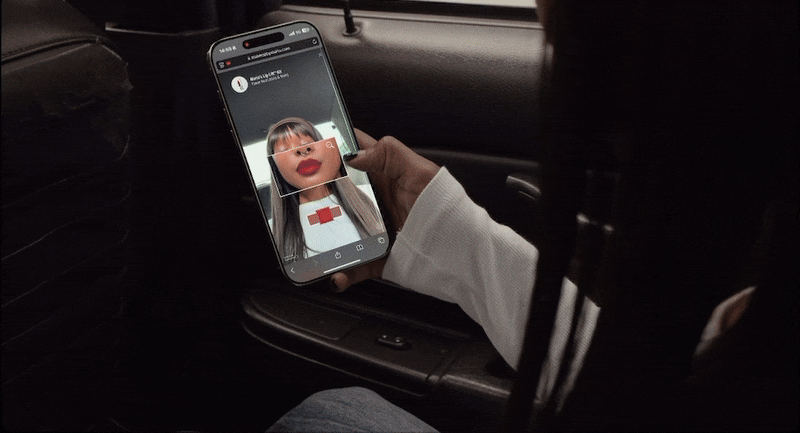
FFFACE x Fendi: Elevating Luxury Eyewear with Virtual Try-On Technology
FFFACE Studio partnered with Fendi to create an innovative virtual glasses try-on experience, allowing customers to seamlessly explore the brand’s eyewear collections. Using augmented reality (AR) and advanced face-tracking technology, the virtual try-on feature accurately maps the user’s facial structure, ensuring a realistic and precise fit. This digital experience enables shoppers to see how different Fendi frames complement their face shape, helping them make informed purchase decisions. The high-quality 3D rendering replicates intricate design details, materials, and lens reflections, preserving the luxury aesthetic of Fendi eyewear. By integrating this cutting-edge solution, Fendi sets a new standard for luxury retail innovation, blending heritage craftsmanship with modern technology to engage a new generation of customers.
Benefits of Virtual Try-On for E-commerce
Virtual try-on technology offers a wide range of benefits that enhance both the customer experience and business operations.
- Bridging the Gap Between Online and In-Store Shopping: Virtual try-on isn’t just a convenience—it’s a necessity in the digital shopping era. It eliminates the guesswork of online purchases by offering an experience that closely mirrors physical try-ons, making e-commerce more reliable and engaging.
- The Power of AI and Personalization: The real magic of virtual try-on lies in AI-driven personalization. As machine learning algorithms refine recommendations based on facial features, skin tone, or body shape, brands can offer hyper-personalized experiences, making shopping feel tailored to each individual.
- Reducing Returns and Boosting Sustainability: In fashion and beauty, returns due to poor fit or mismatched shades are a costly challenge. Virtual try-on significantly reduces these issues by allowing customers to preview products accurately before buying—saving brands money and improving customer satisfaction.
- AR as a Marketing Tool, Not Just a Utility: Virtual try-on isn’t just about function—it’s a powerful engagement tool. By making shopping more interactive and playful, it turns product exploration into an experience rather than a transaction, increasing time spent on a brand’s platform and driving higher conversions.
- Better Inventory Management: Provides data insights on customer preferences and popular products. Helps brands optimize stock levels and avoid overproduction.
- Competitive Advantage: Positions brands as innovative and tech-forward in their industry. Attracts younger, tech-savvy consumers who expect digital shopping enhancements.
Virtual try-on is no longer just a futuristic concept—it’s a practical, game-changing tool that enhances shopping experiences for customers while providing tangible benefits for businesses.
Bring Virtual Try-On to your store with AR MirrorsThe Future of Virtual Try-On: Hyper-Personalization and Omnichannel Shopping
Looking ahead, virtual try-on is set to become even more sophisticated and personalized. Future advancements in biometric scanning, AR, and AI will make digital try-on experiences almost indistinguishable from physical ones. Imagine a world where shoppers can receive real-time size recommendations based on their posture and body movement or where beauty apps suggest makeup not just based on skin tone, but on mood and outfit choices.
Additionally, as retailers embrace omnichannel shopping strategies, virtual try-on will play a key role in blending online and offline experiences. In the near future, shoppers might try on a product virtually at home, then seamlessly transition to a physical store where their selection is already waiting for them to pick up. This fusion of digital and physical retail will redefine convenience and elevate the shopping experience to new heights.
Conclusion
Virtual try-on is no longer a futuristic concept—it is a revolutionary technology shaping the present and future of retail. By enhancing personalization, reducing returns, and expanding into new industries, it is creating a more engaging, efficient, and sustainable way to shop. As AI, AR, and machine learning continue to advance, virtual try-on will only become more immersive, making it an indispensable tool for brands looking to stay ahead in the digital shopping era.












